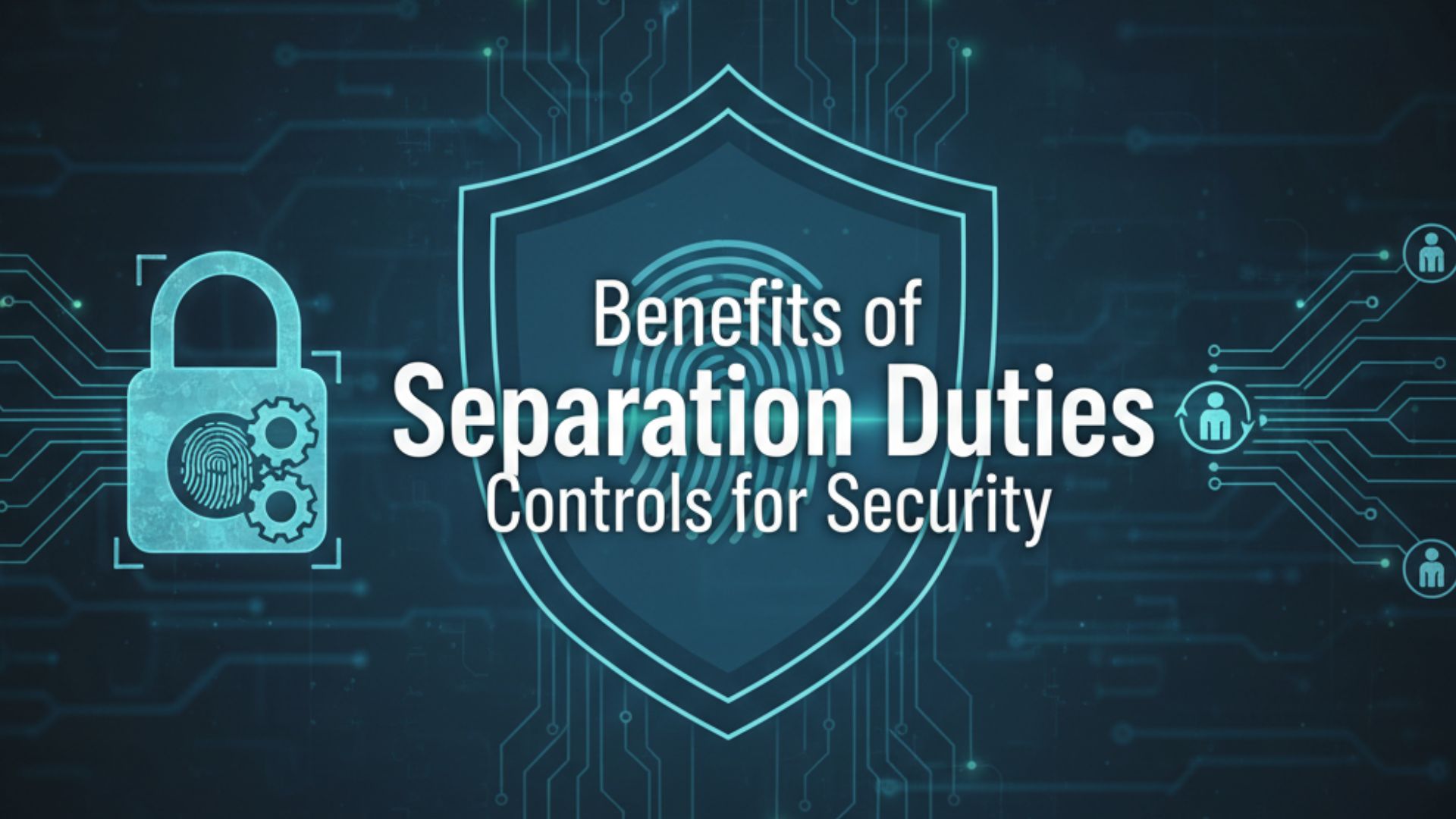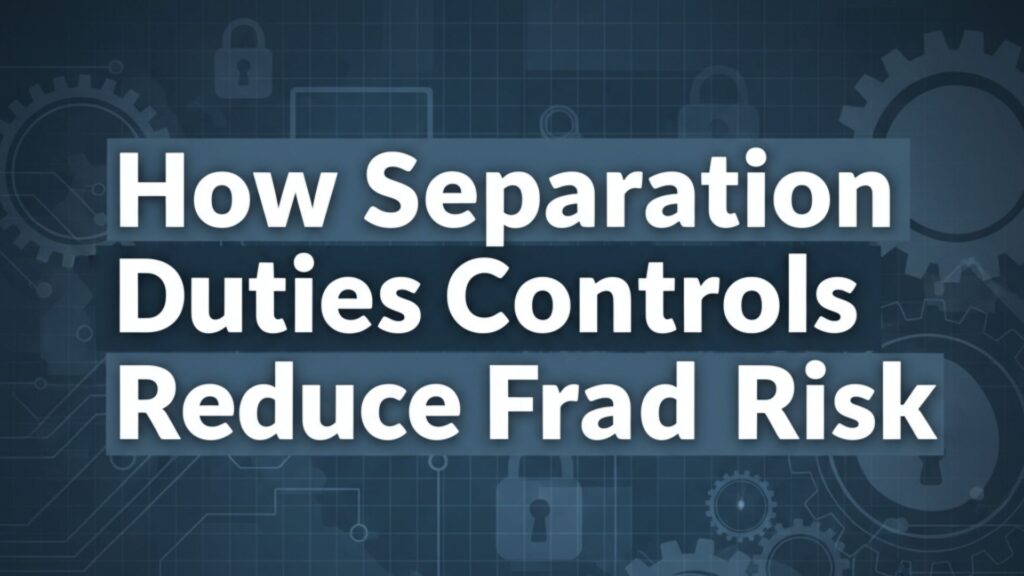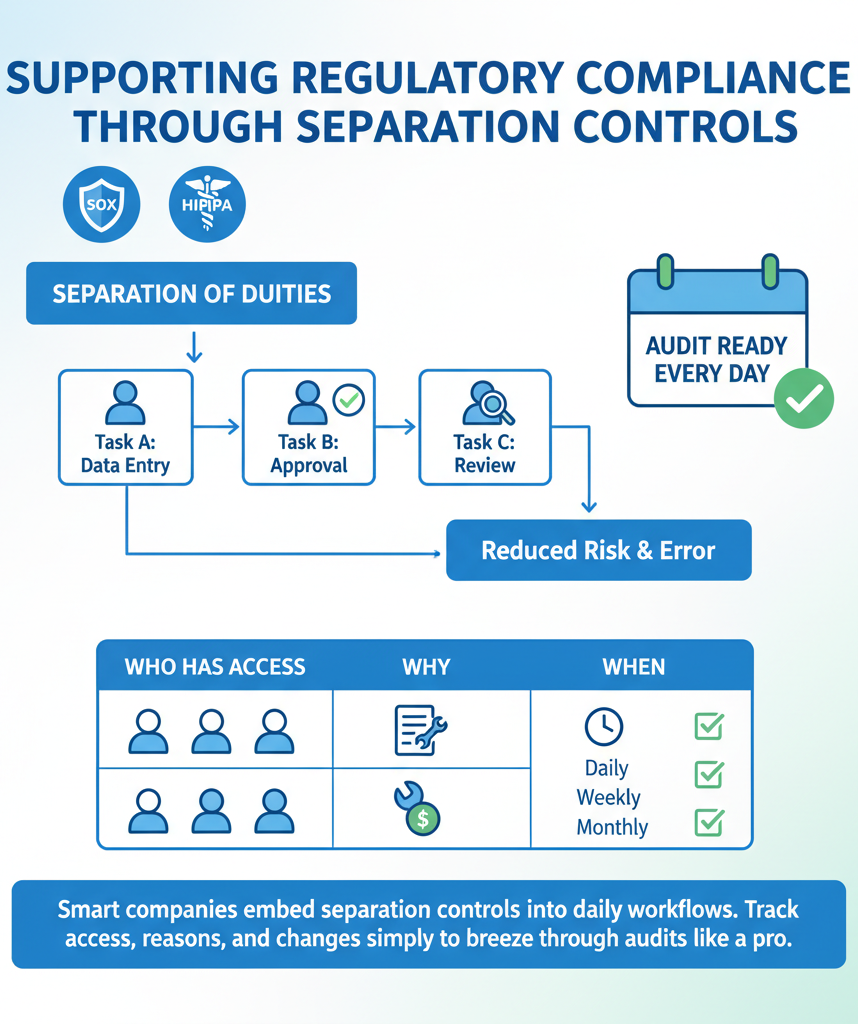
Splitting up job duties shouldn’t require a stack of paperwork on someone’s desk. Like setting up a guard rail system, separating tasks among different people creates a natural system of watching each other’s backs. We’ve seen this work countless times at our security bootcamps – one person handles the money while another signs off on it, just like bank tellers do.
This kind of setup catches those little mistakes that everyone makes, plus it makes any funny business pretty obvious. Our students learn these tricks firsthand during training sessions. Want to see how your dev team can work smarter without drowning in bureaucracy? Read on for some battle-tested examples.
Key Takeaways
- Split up the work and you’ll cut down on funny business and lone-wolf operators
- Makes it dead obvious who’s doing what, plus keeps auditors happy with SOX and HIPAA
- Teams actually get more done when everybody knows their lane
How Separation Duties Controls Reduce Fraud Risk

Money does weird things to people’s heads. Through years of training developers, we’ve watched what happens when someone’s got too much control – it’s like leaving the bank vault unlocked and hoping for the best.
Splitting up who does what just makes sense. When Sally approves the purchases and Mike handles the payments, cooking the books gets a lot trickier. Our students learn separation of duties in development firsthand during training sessions, spotting fraud risks long before they hit production.
Here’s what makes it work:
- Extra sets of eyes catch stuff others miss
- People think twice when they know someone’s checking their work
- No more cowboys running the whole show alone
Last month really drove this home. A client’s accounting team had zero separation – same person approving and paying bills. Someone got creative with expense reports for months, not because they were crooked, but because nobody was watching. We fixed their process, but they’d already learned the hard way.
Enhancing Operational Accuracy and Accountability
Catching bad guys isn’t the whole story – honest mistakes happen all the time. Through years of running security bootcamps, we’ve watched different teams catch slip-ups just because they had multiple sets of eyes on the work. Take our banking client from last quarter – they spotted a $50K mistake during their monthly books simply because someone new looked at the numbers.
Getting specific about who handles what just makes life easier. When stuff breaks (and it always does), finding the problem doesn’t turn into a finger-pointing circus. Our students figure this out pretty quick during crisis simulations – unclear roles turn troubleshooting into a mess.
- Double-checks catch those “oops” moments early
- Clear roles mean better paper trails
- Teams actually get their work done faster
- Audit time becomes less painful
The best part kicks in when teams make this their normal routine. Everyone starts owning their piece of the process, building more trust than those cheesy corporate retreats ever could. Our most successful clients end up with tighter teams and fewer late-night emergency calls.
Supporting Regulatory Compliance through Separation Controls

Rules are a pain, but they’re stuck here for good. SOX, HIPAA – they exist because somebody somewhere messed up badly. Smart companies build separation of duties into their daily work, making compliance feel less like torture and more like basic safety measures.
Most teams panic when auditors show up, but our bootcamp graduates treat it like any other Tuesday. The secret sauce? Building the right controls into everyday workflows. Last month, we watched a healthcare startup breeze through their first audit because they’d followed our playbook for splitting up sensitive tasks.
Smart companies focus on implementing separation of duties (SoD) as part of everyday workflows, making compliance checks feel routine instead of stressful.
Keeping records doesn’t need fancy tools or complicated systems. Track who’s got access to what, why they need it, and when things change. That’s about it. We’ve trained hundreds of teams to keep it simple – just write down the important stuff and keep it current. The rest usually takes care of itself.[1]
Protecting Assets and Preventing Conflicts of Interest
Security controls work like store cameras – they’re watching everybody’s back, not just catching thieves. During our dev bootcamps, students often get this “aha” moment when they realize good access controls protect them as much as the company assets.
Real-world lessons hit harder than textbooks. Last spring, we helped a tech company untangle a mess where one manager picked vendors and signed their checks. Nobody spotted anything wrong until an audit showed he’d been funneling deals to his brother’s business. Not exactly criminal masterminds – just a setup that made it too easy to bend the rules.
These controls shouldn’t make jobs harder – they’re about keeping everyone safe and honest. Our training shows developers how to build these guardrails without turning simple tasks into bureaucratic nightmares. Sometimes that means saying no to admin access, other times it’s splitting up who can change code and who can push it live.
- Match system access to actual job needs
- Keep sensitive stuff locked down tight
- Never let one person handle risky tasks alone
- Write down the important stuff (skip the fluff)
Improving Operational Efficiency and Collaboration
Breaking up duties sounds like it might slow things down, but we’ve watched the opposite happen. When teams split work based on who’s best at what, bottlenecks start disappearing. Our students learn to build systems where handoffs feel natural, not forced.
Clear boundaries actually make teamwork easier. Developers know exactly what they’re responsible for, and managers can spot problems before they blow up. We’ve seen support tickets get resolved faster when teams understand who handles which piece of the puzzle.
Good separation means people talk more, not less. Last month, one of our client teams cut their deployment time in half just by clarifying who owned each step of the process. They stopped stepping on each other’s toes and started working together better.
The magic happens when teams stop seeing these controls as roadblocks and start using them as guidelines for smoother operations. Security doesn’t have to mean slower – it just means smarter.
Simplifying Auditing and Oversight
Credit: KamilSec
Separation duties controls make audits less painful. Independent verification and well-maintained audit logs provide clear evidence of compliance and process integrity. When auditors see a strong control environment with checks and balances, trust grows. Well-designed separation duties access control policies create audit trails that make verification easier and strengthen oversight.
We’ve worked with organizations where audit readiness improved dramatically after reinforcing SoD controls. Monitoring becomes less about catching mistakes and more about sustaining good practices.
- Audit trails document every step for easier review.
- Control frameworks support ongoing oversight and risk assessment.
- Effective enforcement mechanisms reduce audit risk and control failures.
This transparency benefits not just auditors but management and stakeholders as well.
Encouraging Ethical Behavior and Building Trust

Finally, separation duties controls shape organizational culture. By embedding ethical standards through clear role boundaries, organizations promote fairness and honesty. Employees understand what’s expected and the consequences of violations.
This ethical environment builds confidence among customers, partners, and regulators. We’ve noticed that organizations committed to SoD controls enjoy better reputations and stronger stakeholder relationships.
- Ethical standards embedded via duty separation improve workplace integrity.
- Transparency and accountability foster stakeholder confidence.
- Controls encourage responsible behavior and reduce misconduct.
Ethics and trust are hard to measure but critical to long-term success.[2]
Conclusion
Breaking up key tasks among different people cuts down on mistakes and fraud—no question about it. Divide things right, and the whole place runs smoother, cleaner, safer. It’s like having multiple sets of eyes watching over everything (the accountants love this stuff for audits).
Teams work better when they know exactly who’s supposed to do what. Any organization worth its salt needs these controls in place, even if it takes some time to get them working just right.
Join our Bootcamp to put Separation of Duties into action
FAQ
How do separation of duties and segregation of duties help with fraud prevention and risk mitigation?
Separation of duties and segregation of duties spread out important tasks so no one person controls everything. This setup adds strong internal controls, which lowers the chance of fraud risk and simple mistakes. By dividing work, organizations build natural checks and balances in daily operations.
These steps improve fraud detection, support compliance controls, and protect against operational risk. Together, they create a healthier control environment where accountability measures matter and conflicts of interest are less likely to happen.
Why are authorization controls and custody of assets important for compliance controls and SOX compliance?
Authorization controls decide who can approve or deny certain actions, while custody of assets makes sure people only handle items they’re trusted with. Both link directly to compliance controls, since they stop unauthorized use or loss.
These rules also tie into SOX compliance, which demands strong financial controls and proof of audit compliance. By putting them in place, companies improve transaction approval, record keeping, and audit trail quality. That reduces audit risk, strengthens corporate governance, and supports financial audit requirements without leaving gaps.
How do transaction approval, reconciliation process, and record keeping support audit trail and conflict of interest prevention?
Transaction approval ensures deals are checked before going through, while the reconciliation process helps match records to actual outcomes. Strong record keeping holds these details in order. Together, they make an audit trail clear and trustworthy.
This system not only helps prevent conflict of interest but also keeps compliance risk lower. These business process controls add transparency, improve accountability measures, and support operational compliance. They also help auditors test process integrity and uncover control weaknesses before they grow into control failures.
What role do access management, role-based access, and user access control play in IT security controls?
Access management sets the rules for who can enter or use systems. Role-based access keeps jobs clear by assigning permissions to roles, while user access control makes sure only the right people get access rights. In IT security controls, this approach blocks access violations and strengthens identity governance.
It also lowers security risk, stops role conflict, and reduces compliance risk. These tools improve access segregation, limit control overlap, and support asset protection. Together, they create a safer control framework where policy enforcement and access separation work smoothly.
How do job rotation, user provisioning, and audit logs reduce role conflict and segregation violations?
Job rotation makes sure no one holds a sensitive duty too long, while user provisioning controls who gets new access rights. Audit logs then keep records of all user actions. This combination limits role conflict and helps spot segregation violations quickly. It also supports segregation policy, reduces conflict prevention issues, and improves audit compliance.
By enforcing policy enforcement and multi-person control, organizations build stronger security governance. These actions close control weaknesses, reinforce prevention controls, and back operational risk management.
Why is a segregation matrix helpful for risk assessment, controls framework, and fraud management?
A segregation matrix maps out who handles what, making it easier to see overlap or risk. It supports risk assessment by showing where fraud risk or error prevention gaps may appear. This map also strengthens the controls framework by defining clear process segregation and control segregation.
When linked with fraud controls and transaction controls, it adds stronger fraud management. Organizations can spot control overlap, apply enforcement mechanisms, and fix segregation violations. It’s a simple way to keep management controls clear and reduce operational risk.
References
- https://en.wikipedia.org/wiki/Separation_of_duties
- https://legacy.acfe.com/report-to-the-nations/2020/docs/infographic-pdfs/Internal%20Control%20Weaknesses%20that%20Contribute%20to%20Occupational%20Fraud.pdf

